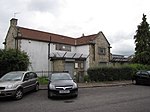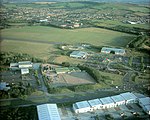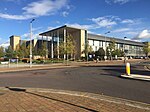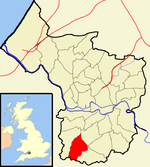Hengrove
Areas of BristolBristol geography stubsEngvarB from October 2013Places formerly in SomersetWards of Bristol

Hengrove is a suburb and council ward of Bristol, England, situated between Whitchurch, Knowle and Bishopsworth, running along both dual carriageways, Wells Road (A37) and Airport Road (A4174). The area of Knowle it adjoins is known as Knowle West. The residential parts of Hengrove consist mainly of working to middle class terrace houses. There are also infant, primary and secondary schools in the area. It is served by buses and, since 2019, MetroBus rapid transit services. Hengrove holds the long-disused Whitchurch Airport, which has mostly been redeveloped with a hospital and leisure facilities now situated on parts of the former airfield.
Excerpt from the Wikipedia article Hengrove (License: CC BY-SA 3.0, Authors, Images).Hengrove
Hengrove Way, Bristol Hartcliffe
Geographical coordinates (GPS) Address Nearby Places Show on map
Geographical coordinates (GPS)
| Latitude | Longitude |
|---|---|
| N 51.416 ° | E -2.5918 ° |
Address
Hengrove Way
Hengrove Way
BS4 1XJ Bristol, Hartcliffe
England, United Kingdom
Open on Google Maps










